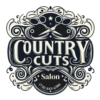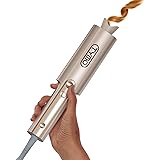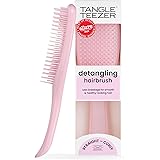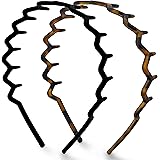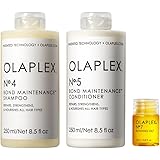Introduction to Haircare Routines
Having a tailored haircare routine is essential for maintaining healthy hair, as various hair types require different approaches to care. Hair health is influenced by multiple factors, including texture, thickness, and porosity. Understanding these aspects is crucial for individuals seeking to select appropriate products and care methods that align with their unique hair characteristics.
Hair texture is one of the primary factors influencing the effectiveness of any haircare routine. It can be categorized into straight, wavy, curly, and coily patterns. Each texture type has its own set of needs; for instance, straight hair may require lightweight products to avoid greasiness, while curly hair often benefits from moisture-rich formulations to define curls and reduce frizz. Recognizing one’s hair texture can significantly impact the choice of shampoos, conditioners, and styling aids.
Thickness is another vital consideration within haircare routines. Individuals with fine hair may prefer volumizing shampoos and light conditioners, which can help to provide body without weighing hair down. Conversely, thick or coarse hair generally benefits from heavier creams and oils that can provide necessary hydration and manageability. Tailoring products to hair thickness enhances the overall effectiveness of a routine.
Additionally, porosity—a hair strand’s ability to absorb and retain moisture—plays a crucial role in determining the appropriate haircare regimen. Low porosity hair tends to repel moisture, requiring heat and specific products to enhance absorption. In contrast, high porosity hair absorbs moisture easily but may struggle to retain it, necessitating the use of sealing products to lock in hydration. Therefore, understanding both the porosity and the overall hair type is essential for optimal haircare.
By assessing their hair texture, thickness, and porosity, individuals can develop a customized haircare routine tailored to their specific needs. This understanding ultimately enables the selection of suitable products and care techniques, promoting healthier and more manageable hair over time.
Understanding Hair Types
Determining the specific type of hair one has is vital for establishing an effective haircare routine. Hair types can largely be categorized into four primary categories: straight, wavy, curly, and coily. Each type possesses unique characteristics that influence how hair maintenance should be approached, ensuring optimal health and appearance.
Straight hair is characterized by its smooth texture and lack of curls or waves. This type typically has a natural shine due to the uniform distribution of oils from the scalp. However, straight hair may also be prone to oiliness, necessitating regular cleansing to prevent buildup. It often absorbs products efficiently, making it relatively simple to manage with lightweight styling solutions.
Wavy hair presents a blend of straight and curly characteristics, leading to natural curves and bends that provide volume. This hair type can vary significantly in thickness, affecting its ability to retain moisture. Wavy hair often benefits from hydrating products, as well as techniques that enhance its natural wave pattern without causing frizz.
Curly hair, known for its distinct spiral shapes, can range from loose curls to tighter coils. This hair type may struggle with dryness, as natural oils have a harder time traveling down the twists and turns of the hair shaft. Consequently, it is essential for individuals with curly hair to use moisturizing products and treatment methods that promote hydration and define curls.
Coily hair, which consists of very tight curls, is often the most textured. This type is prone to dryness and can break more easily if not cared for properly. Understanding that coily hair requires extra moisture and protective styling methods is crucial for maintaining its health and reducing damage.
Identifying one’s hair type is the foundation for crafting a personalized haircare routine that addresses specific needs and promotes overall hair health. Different types necessitate distinct approaches to care, product selection, and styling techniques to achieve the desired results.
Curly Haircare Routine
Maintaining and enhancing curly hair requires a dedicated haircare routine that focuses on moisture, protection, and proper styling techniques. Curly hair tends to be drier than straight hair due to its unique structure, which makes it imperative to prioritize hydration in every step of the haircare process. Products specifically designed for curly hair often include moisturizing ingredients such as shea butter, coconut oil, and aloe vera to provide essential hydration.
When it comes to washing, a gentle cleanser is preferable to avoid stripping natural oils. Consider using a sulfate-free shampoo or a co-wash product, which can cleanse the hair while maintaining moisture levels. It is typically recommended to wash curly hair less frequently than other hair types—about once or twice a week—to preserve its natural hydration. Conditioning is crucial; a rich, hydrating conditioner should be applied generously to detangle and nourish the curls while they are still wet.
After washing, using a leave-in conditioner can help maintain moisture throughout the day. For styling, products such as curl creams or gels formulated for curls can help define and hold the natural shape without causing crunchiness. The “plopping” technique, where curls are gently placed in a cotton t-shirt or microfiber towel, can also enhance curl definition while reducing frizz.
Moisture retention is the cornerstone of any curly hair routine. It is advisable to avoid heat styling tools frequently, as they can exacerbate dryness. Additionally, some common mistakes include applying products to dry hair, using rough towels, and neglecting trims, which can lead to split ends and damage. Instead, embrace your natural texture through a mindful, moisture-driven approach, enabling your curls to shine and flourish.
Straight Haircare Routine
Caring for straight hair involves a tailored approach that focuses on maintaining its natural texture while promoting shine and health. To achieve this, selecting lightweight products is essential; heavier formulations can weigh the hair down, leading to a limp appearance. Opt for shampoos and conditioners specifically designed for straight hair, which often contain ingredients that enhance smoothness without adding excess weight.
Washing frequency plays a crucial role in a straight haircare routine. Most experts recommend washing straight hair 2-3 times per week. This frequency helps to maintain natural oils, preventing the hair from becoming overly dry, which is critical for keeping it shiny and healthy. When washing your hair, consider using lukewarm water. Hot water can strip the hair of essential oils, leading to dryness and potential damage. Additionally, incorporating a clarifying shampoo once a month can help eliminate product buildup, ensuring healthier hair overall.
Heat protection is another vital aspect of straight hair maintenance. When styling with heat tools, always apply a heat protectant spray. This product acts as a barrier between the hair and the damaging effects of heat, minimizing the risk of breakage or dullness. Furthermore, when blow-drying, use a nozzle attachment to direct airflow precisely, which aids in achieving a smooth finish without excess frizz.
To enhance shine and smoothness, consider incorporating a light serum or oil after styling. Products with natural oils, like argan or jojoba, can impart gloss without making hair greasy. Additionally, if oiliness is a concern, focus on root care by using a gentle dry shampoo to refresh hair between washes. By following these guidelines, individuals with straight hair can maintain vibrant, healthy locks while avoiding common pitfalls like oiliness and flatness.
Wavy Haircare Routine
Wavy hair, characterized by its natural texture that falls between straight and curly, requires a tailored approach to maintain its unique beauty. The primary focus for wavy haircare is to define waves while minimizing frizz, ensuring your locks remain vibrant and full of life. An effective routine starts with selecting the right products; look for shampoos and conditioners specifically formulated for wavy hair that provide moisture without weighing down the waves. Products containing ingredients such as shea butter, argan oil, or glycerin can help enhance wave definition and combat dryness.
When styling wavy hair, consider employing the “scrunching” technique. After applying a lightweight mousse or curl cream to damp hair, scrunch sections of your hair from the tips towards the roots. This method encourages the natural wave pattern, resulting in bouncy, well-defined waves. Additionally, incorporating a leave-in conditioner can help to lock in moisture, thus further reducing frizz. Avoid heavy styling products that might cause build-up, leading to limp waves.
Maintaining volume in wavy hair is equally important. Regularly using a clarifying shampoo can help remove any product residue, ensuring your waves remain light and airy. To boost volume, try diffusing your hair while drying. This method distributes heat evenly and encourages the waves to form without flatness. It is essential to maintain a balance of moisture and protein within your regime as well. Wavy hair generally thrives on moisture, but incorporating protein treatments every few weeks helps strengthen the hair cuticle, preventing breakage.
With dedication to implementing these strategies consistently, individuals with wavy hair can enjoy well-defined waves that are both beautiful and healthy. Tailoring your haircare routine specifically for wavy textures will not only enhance your hair’s appearance but also improve its health over time.
Coily Haircare Routine
Coily hair, often characterized by its tight curls and unique texture, necessitates a specialized haircare routine to maintain its health, definition, and moisture. Individuals with coily hair frequently experience dryness and breakage, making deep conditioning a fundamental aspect of their regimen. Utilizing a quality deep conditioner at least once a week can significantly enhance moisture retention and fortify the hair shaft. Look for products rich in natural oils and butters, such as shea butter or coconut oil, which can penetrate the hair fibers effectively.
In addition to deep conditioning, protective styles play a critical role in preserving the integrity of coily hair. These styles, which can include braids, twists, or updos, not only provide a break from daily manipulation but also shield the hair from environmental stressors, thereby reducing the likelihood of split ends and hair breakage. Incorporating protective styling into the routine can be particularly beneficial during seasonal changes when hair may become more prone to dryness.
Furthermore, the regular application of heavy creams and oils is essential for achieving optimal moisture levels in coily hair. Products with a thicker consistency help seal in hydration and create a barrier against moisture loss. These creams and oils should be applied while the hair is damp to maximize absorption. For detangling, it is advisable to use a wide-tooth comb or fingers, as this approach minimizes the risk of breakage. It is critical to detangle slowly and gently, ideally when the hair is conditioned, to ease knots and tangles.
Maintaining healthy coils also involves regular trims, which prevent the formation of split ends. Establishing a haircare routine tailored to coily textures not only enhances the natural beauty of the curls but also supports overall hair health, allowing individuals to embrace their coily hair with confidence.
Seasonal Haircare Adjustments
The dynamic nature of the seasons significantly impacts the health and appearance of hair, necessitating adjustments in haircare routines tailored to specific hair types. Understanding how varying humidity, temperature, and environmental factors interact with one’s hair can facilitate optimal hair health throughout the year.
During the summer months, increased humidity can lead to frizz, particularly for individuals with curly or wavy hair. To combat this, it is advisable to incorporate lightweight anti-frizz serums or oils into the haircare regimen. These products help seal moisture into the hair and prevent puffiness. For straight hair types, maintaining a balance between hydration and weight is essential; using a hydrating spray or a leave-in conditioner can provide moisture without weighing the hair down.
As temperatures drop in winter, hair often becomes dry and brittle. This is exacerbated by indoor heating, which can sap moisture from the air. Those with dry or fine hair should switch to more nourishing, hydrating shampoos and conditioners and consider using a weekly deep conditioning treatment to restore moisture. Opting for oil-based products can also help seal in hydration, offering additional protection against the frigid air. Individuals with oily hair types might benefit from lighter formulas, ensuring that they don’t overwhelm their scalp while maintaining adequate moisture levels.
Spring and autumn present unique challenges, often characterized by fluctuating weather and potential exposure to environmental aggressors like wind or pollution. Adapting the haircare routine during these transitional seasons might include adopting protective hairstyles and incorporating clarifying shampoos to remove buildup without stripping essential oils. Overall, being mindful of seasonal changes and modifying the haircare routine accordingly can enhance the health and vitality of all hair types.
Common Haircare Mistakes to Avoid
Maintaining a proper haircare routine is crucial for promoting healthy and vibrant hair. However, many individuals unknowingly commit common haircare mistakes that can lead to damage and hinder their hair’s overall health. Identifying these pitfalls is essential for anyone looking to improve their haircare practices.
One of the most prevalent mistakes is over-washing the hair. Many people believe that washing their hair daily will keep it clean and healthy; however, this practice can strip the hair of its natural oils, leading to dryness and frizz. Instead, it is advisable to wash hair two to three times a week, depending on the hair type and lifestyle. This adjustment not only preserves moisture but also allows the scalp to maintain its natural balance.
Additionally, neglecting heat protection is another crucial error that can damage hair. Regular use of heat styling tools, such as blow dryers, straighteners, and curling irons, exposes hair to high temperatures that can cause breakage and split ends. Utilizing a heat protectant spray or serum before styling can significantly reduce damage and safeguard hair against the harmful effects of heat.
Using the wrong products tailored to one’s specific hair type is another common mistake. Hair products are formulated with various ingredients designed to meet the needs of different hair types—be it curly, straight, thick, or fine. By selecting products that align with their unique hair characteristics, individuals can enhance the efficacy of their haircare routine, promoting a healthier appearance.
Lastly, it is vital to avoid excessive brushing or combing of wet hair, which can cause breakage. Instead, using a wide-toothed comb and allowing hair to dry partially before detangling can minimize damage. Addressing these common haircare mistakes will lead to healthier, more manageable hair.
Conclusion and Final Tips
In today’s fast-paced world, the significance of personalized haircare routines cannot be overstated. Each individual’s hair type presents unique challenges and requires specific care strategies. This guide has illuminated the path to understanding the diverse hair types and the tailored approaches necessary for maintaining optimal hair health. As you embark on your haircare journey, patience and consistency will be your most valuable allies. Just as every hair type is distinct, so too are the results. It is crucial to give your chosen products and routines time to work effectively.
To further enhance your haircare regimen, consider incorporating these final tips. First, establish a regular washing schedule that aligns with your hair type’s needs. Oily hair may require more frequent cleansing, whereas dry or curly hair generally benefits from less frequent washing. Additionally, make use of nourishing treatments such as deep conditioning masks or oil treatments, which can provide necessary moisture and restore vitality to your hair.
Moreover, hydration plays a pivotal role in hair health. Ensure you are drinking adequate water daily and consider hydrating your hair with leave-in conditioners or hydrating serums. Protective hairstyles can also shield your hair from environmental damage while promoting growth. It’s equally important to minimize heat exposure by opting for air-drying techniques or using heat protectant sprays when styling is necessary.
Lastly, approach your haircare journey with a positive mindset. Acknowledge that achieving healthy hair is a gradual process that involves trial and adjustment. Embrace your unique characteristics, and remember that the journey to healthy hair is as essential as the destination. By implementing these practices and staying committed to your individualized haircare routine, you will likely see remarkable improvements in your hair’s health and appearance over time.
